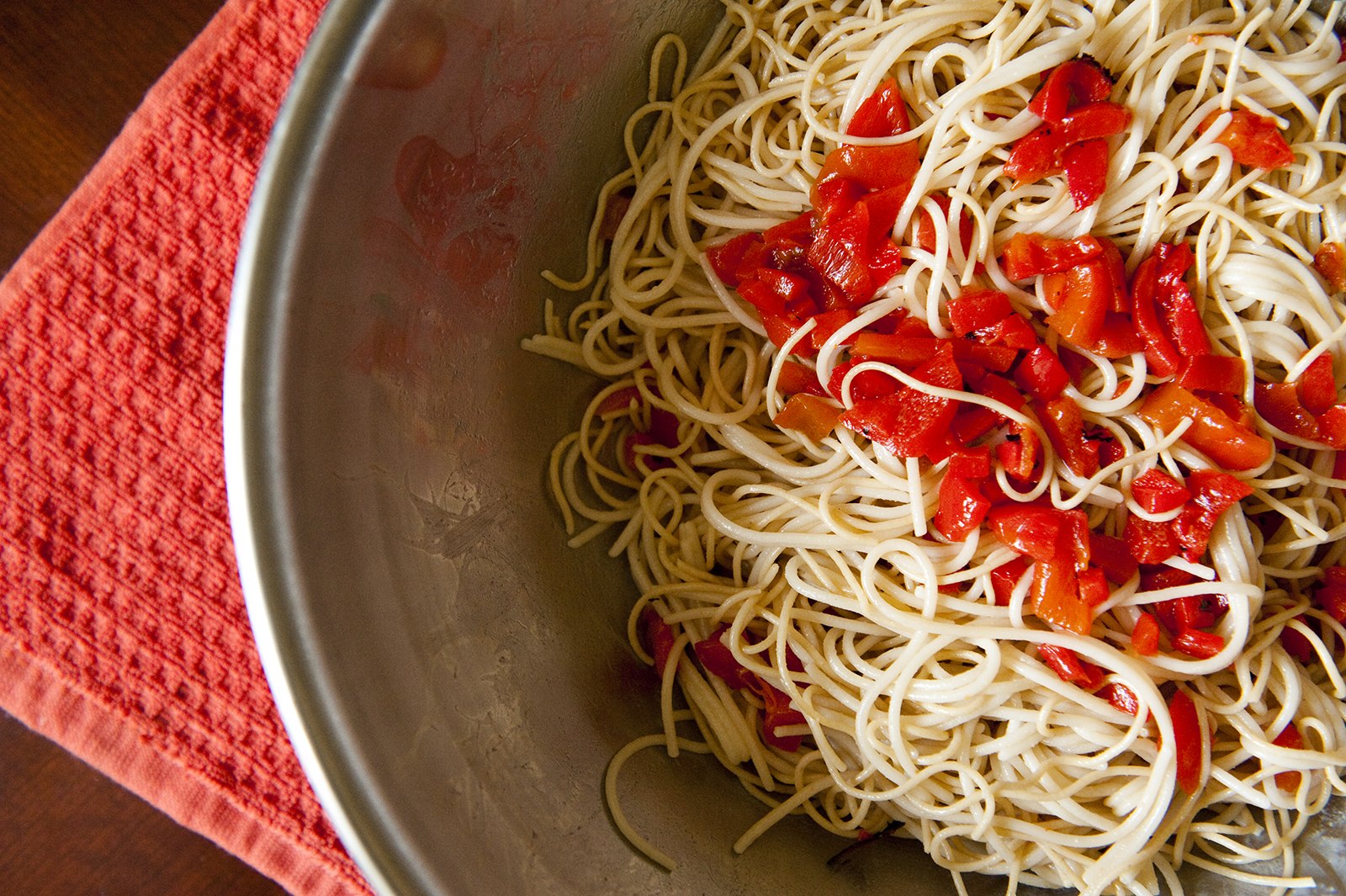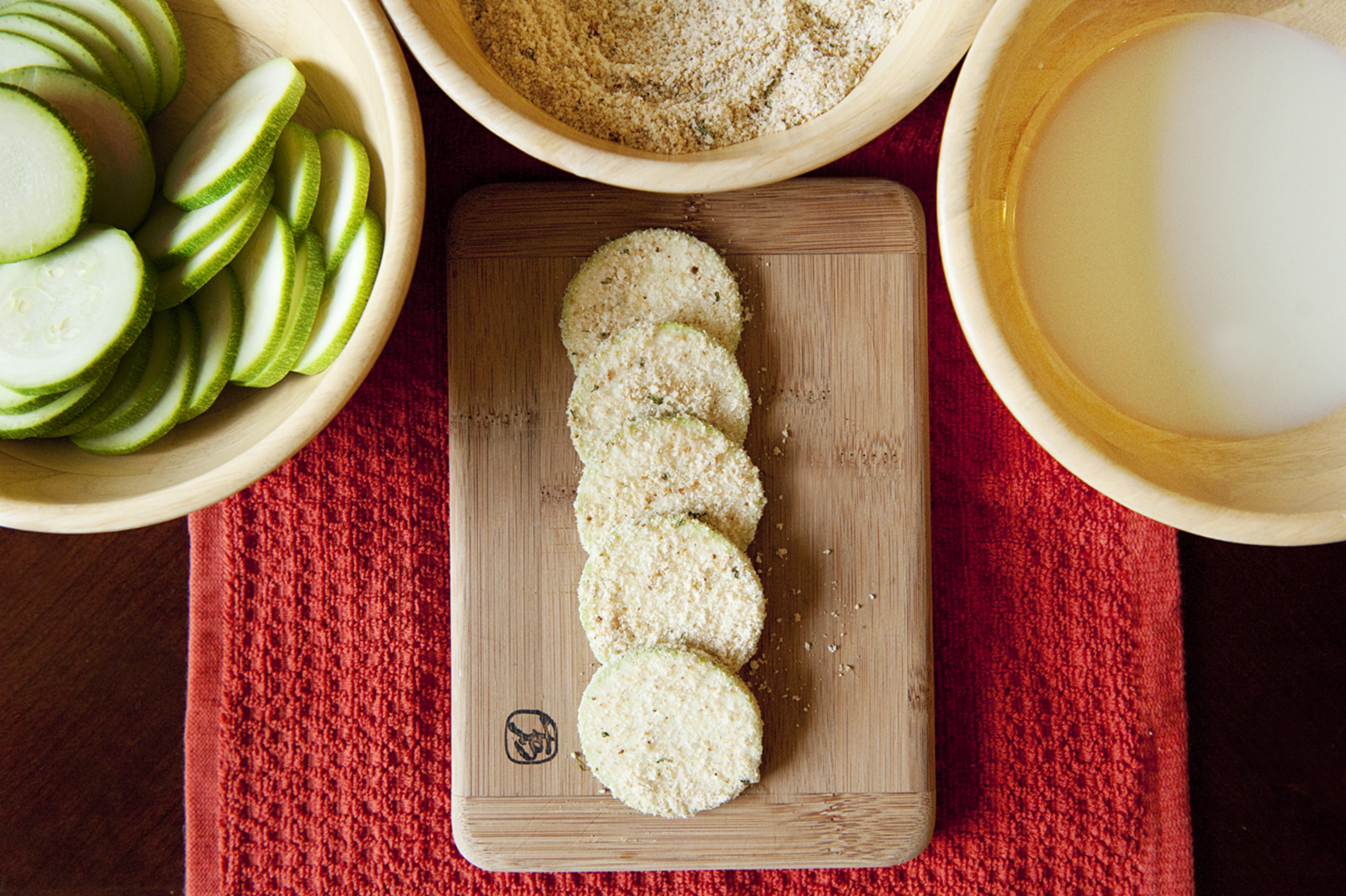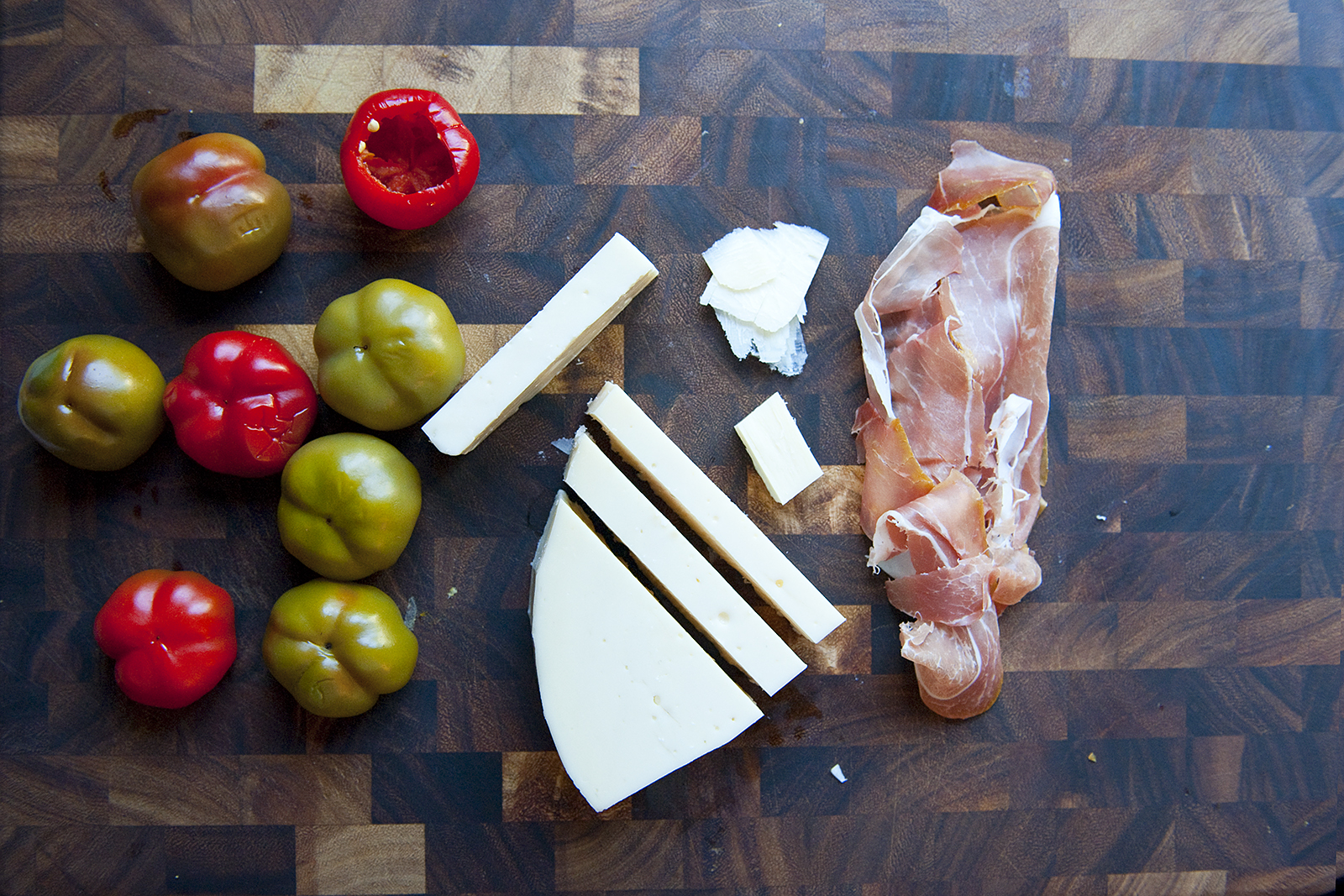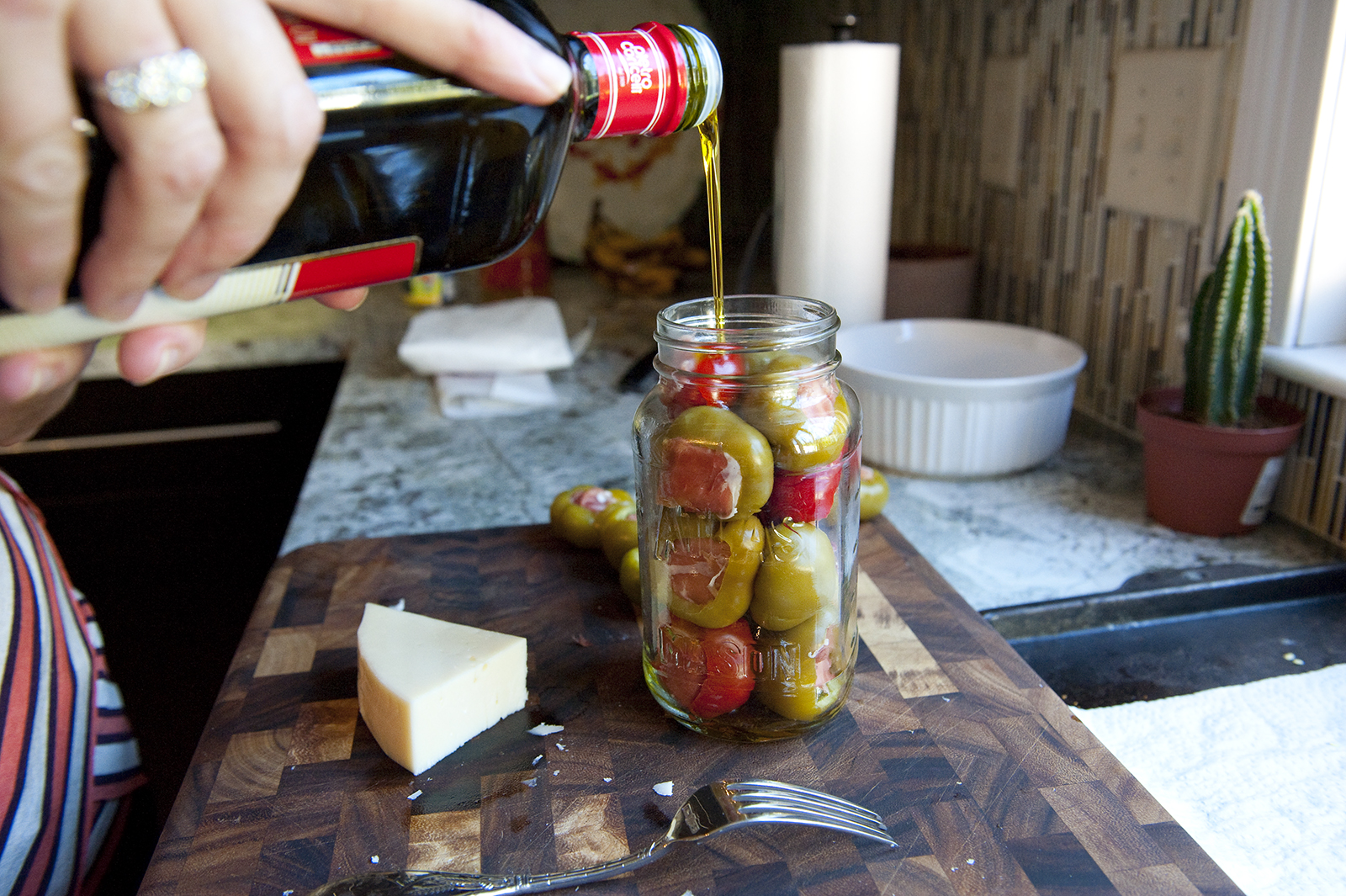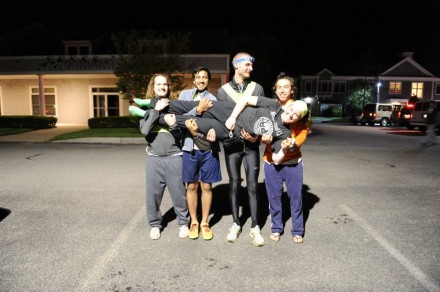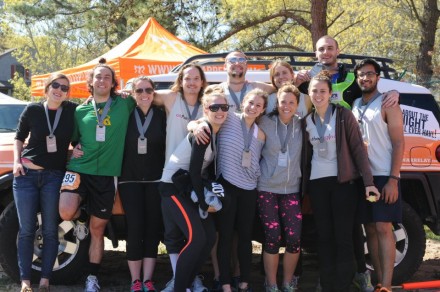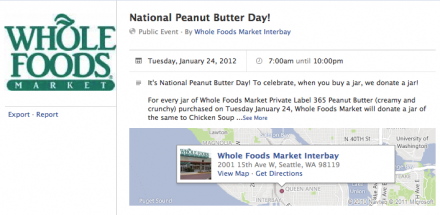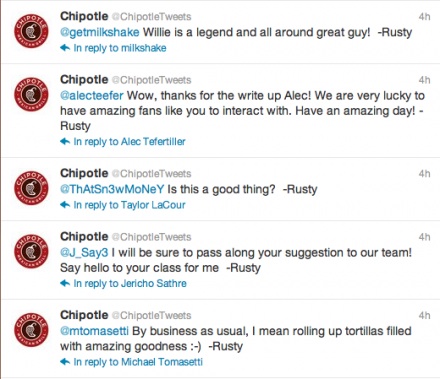Author Archives: DanielleFalala
Torta di Pasta
This has got to be the most creative way to use left over pasta. As I pack up my life in NYC and prepare for my San Francisco departure, I have been trying to find ways to finish my left over food that I can’t ship. Alas, I found this crispy, cheesy gem. Enjoy!
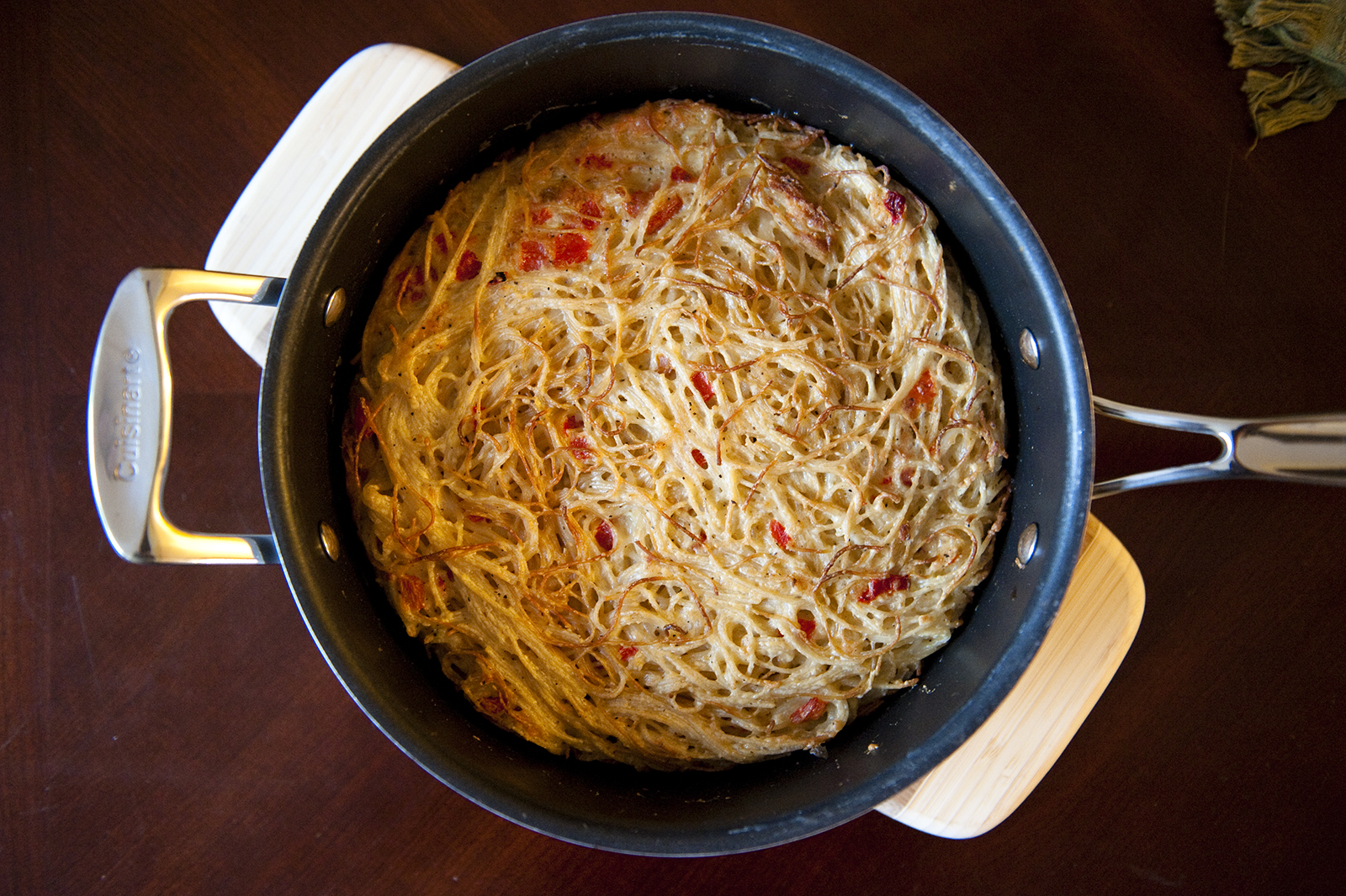
What You Need:
– 8oz spaghetti
– 1/2 cup oil packed roasted red peppers
– 4 large eggs
– 1 1/2 teaspoons salt
– 1/2 teaspoon freshly ground black pepper
– 3/4 cup grated parmesan
– 3/4 cup grated fontina
– 1 tablespoon unsalted butter
– 1 tablespoon olive oil
Cook your pasta, using a little salt in your boiling water until tender but still firm to the bite. Drain your pasta completely, adding roasted red peppers into the mixture.
Set the pasta aside to cool completely (this is incredibly important, otherwise you could curdle the eggs when you add them later)
In a separate bowl, whisk eggs, salt and pepper together until well blended. Mix in cheeses to blend. Once the spaghetti is cooled, add egg mixture and toss the pasta until coated.
Preheat your broiler. Melt butter and oil in a large 9 1/2-inch diameter skillet on medium heat. Once the skillet is heated, add the pasta mixture and press down evenly with a spatula. Cook the pasta until the bottom is brown (depending on your stove this can be 3-10 minutes). Once the bottom is browned, transfer skillet to the broiler. Broil until the top is a golden brown, about 5-10minutes.
Cool the skillet to room temperature and place torta onto a platter to cut.
Things to consider:
The original recipe calls for sun dried tomatoes, but I had a jar of roasted red peppers and substited. I also made this with elbow pasta, edemame and black olives. Be creative and try different additives.
The first time I made this, I used parmesan and Romano cheese. It came out very rich, but was still tasty. As long as your cheeses are grated you really can substitute anything. Make sure whatever you are using, melts well with oils so your torta doesn’t fall apart.
Baked Zucchini Chips
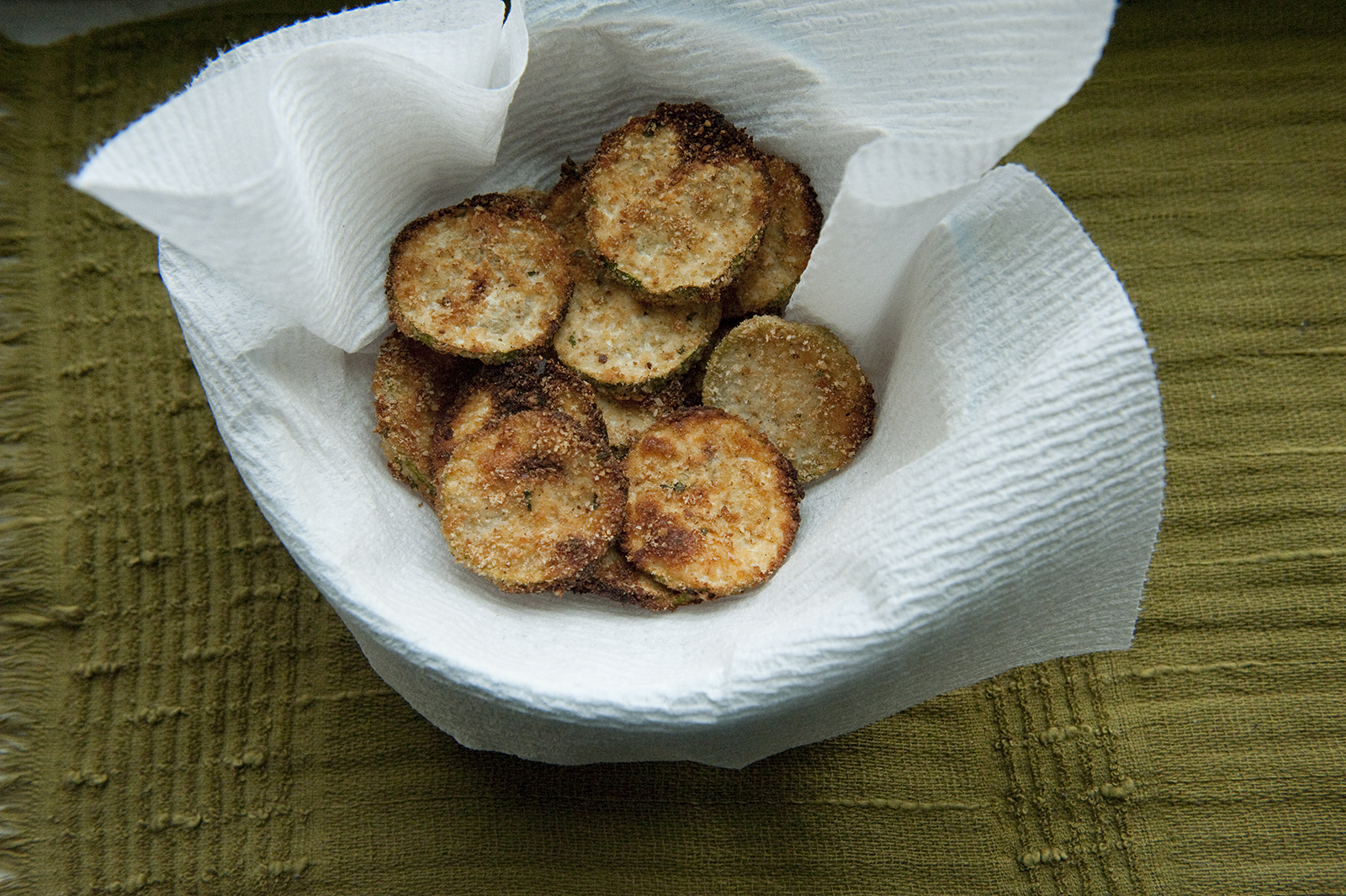 I have wanted to try these chips ever since I spotted them on Pinterest a few months ago. This healthy alternative is incredibly easy to make and will satisfy those cheesy, salty cravings without the guilt of downing half a bag of Cheez-Its (as if that ever stopped me).
I have wanted to try these chips ever since I spotted them on Pinterest a few months ago. This healthy alternative is incredibly easy to make and will satisfy those cheesy, salty cravings without the guilt of downing half a bag of Cheez-Its (as if that ever stopped me).
What You Need:
– 1/4 cup breadcrumbs
– 1.4 cup grated fresh parmesan cheese
– 1/4 teaspoon salt
– 1/4 teaspoon garlic power
– 1/8 freshly ground black pepper
– 1/4 cup skim milk (unsweetened almond milk can be an alternative)
– 2 1/2 cups sliced zucchini (1/4-inch-thick)
– Cooking spray
Preheat your oven to 425*F. Spray a wire, oven safe cooking rack and place it on top of a baking sheet.
Combine all dry ingredients into a bowl and whisk together to evenly mix. Pour milk into a separate, shallow bowl.
Coat zucchini slices in milk. Then, dip them into the breadcrumb mixture coating them completely.
Place the chips onto the wire rack and place into the oven. Bake for 30 minutes or until the chips are browned and crisped.
Things to keep in mind:
The thinner your zucchini sliced, the crispier they will stay over time. My first batch was a little too thick, so they became less “chip” like about an hour after pulling them from the oven.
Next time I make these, I will add some cajun to spice them up a bit. They are great as is but I am a sucker for heat.
What are some healthy alternative snacks you’ve made lately?
Taking Google Analytics to the Next Level: Events, Goals and Campaigns
For anyone in charge of a website, usage data is power. Google Analytics will track site traffic over specific time periods, give you insight into where that traffic is coming from, and help you identify keywords that lead users to your site. But the real power of GA comes when you use its custom features to track very specific actions you hope that users are taking on your site. Unfortunately, setting up these custom features is not as intuitive as one would hope, and using them can be intimidating.
There are three custom features in GA that will lead to more detailed, useful analytics:
Events – Tracking non-page view interactions on your website.
When to Use: You can set an “Event” to track anything that requires a click on your website. For example, use it to find out how many users watched a video—or even if they started watching and then abandoned it. Track if they clicked on a slideshow or a photo album. These results will help you evaluate what’s popular, what’s useful, what videos are too long, etc.
The Details: Tracking an Event requires that you (or more likely your IT team or web agency) place tracking code generated by GA into your website code. It’s fairly simple, but talk to your Webmaster about implementing the extra code on your website.
Goals – Tracking something you wanted a user to complete.
When to Use: Use “Goals” to track the user progress of a specific objective you’ve set. Examples of goals include reaching a particular page through a funnel or hitting a predetermined metric like pages per visit or time spent on your website. Did the user follow through to your photo albums from the blog? Did they download a document you drove them to? Did they reach your thank you page after a transaction? If you know, for example, when users that start at the home page and travel to your “about us” and then to “the shop” are 80% more likely to buy something, you can set a Goal in GA to track this exact path and see how many people complete it. These are valuable in evaluating how effectively your website components are working together.
The Details: Setting up a Goal requires no additional code on your site, but you do have to be a GA administrator for your site (as opposed to just a GA user). And Goals do not automatically populate past metrics, so you will need to wait a few days after setting one up before you track the results.
Campaigns: Tracking external links that lead to your site.
When to Use: “Campaigns” are related to your advertising (such as Google AdWords), email marketing, and social media campaigns. You can even track your non-digital campaigns on billboards or print ads. If you want to know what percentage of your visitors are driving to your site from external efforts, this is a great tool to use.
The Details: Campaigns are easy to set up and require generating a coded URL for each link you put out there to drive traffic to your site. These are especially easy to use in emails and online ads, where the user doesn’t need to see the actual URL to click on it (because the URLS generated are not attractive). This is more specifically designed for naming purposes, so you understand where the data is coming from when in GA.
Google Analytics has online tutorials for all of these features, or you can work with your analytics expert, agency, or IT department to set and track them for you.
Originally posted on the Thinkso blog.
Mom’s Homemade Fall Chili
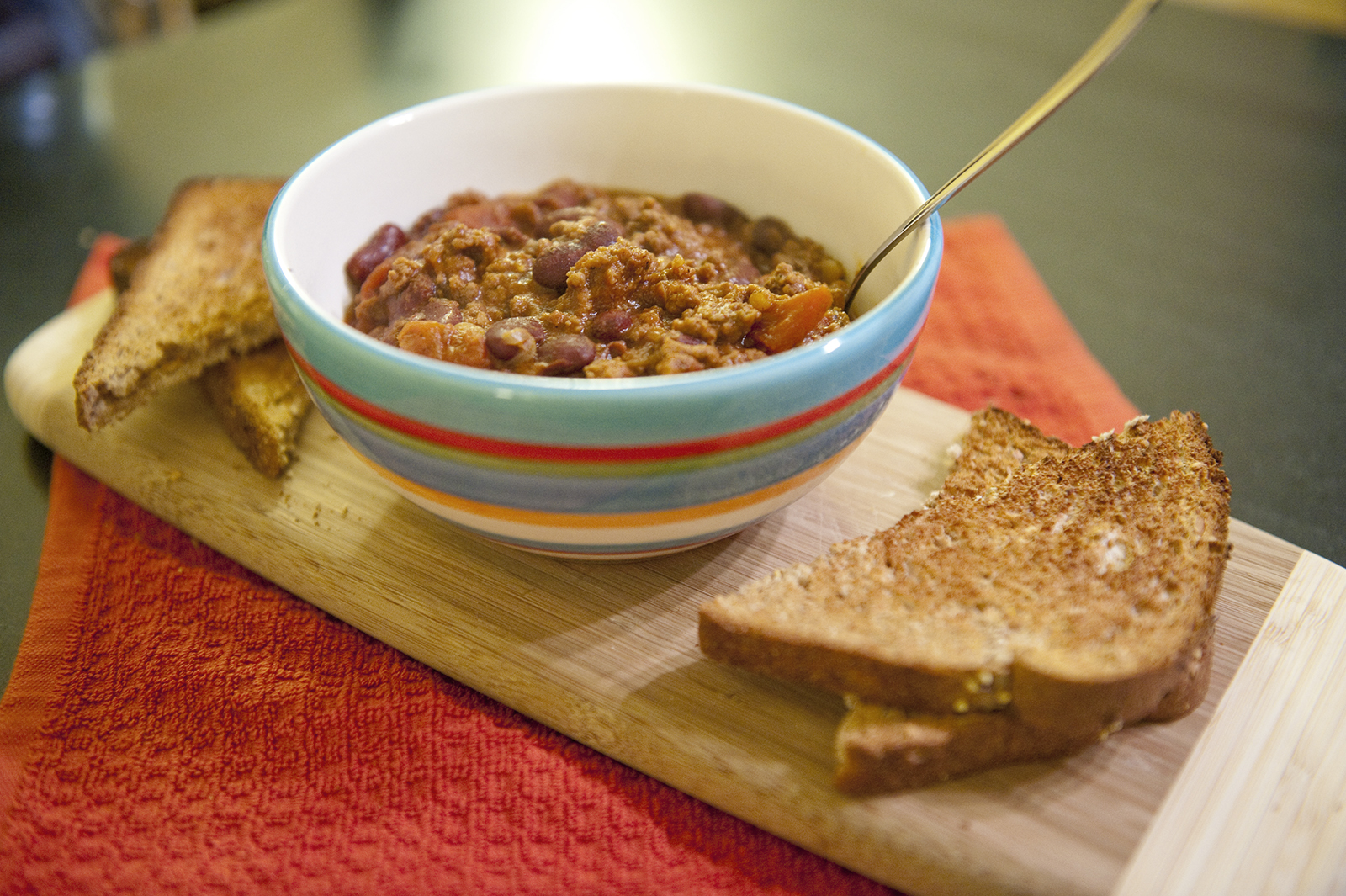 This week was crazy to say the least. Hurricane Sandy hit the metro north region a few days ago and she left Manhattan and surrounding boroughs/states in shambles. A few friends and I evacuated to Harlem and were incredibly lucky to have water, power and heat post storm. My heart breaks for those who lost their homes to flooding, fires and the harsh winds. An entire neighborhood in Queens burnt to the ground, people are in desperate need of supplies and some are still being rescued. As our city starts to take steps to rebuild and find normalcy again, I thought some comfort food was in order.
This week was crazy to say the least. Hurricane Sandy hit the metro north region a few days ago and she left Manhattan and surrounding boroughs/states in shambles. A few friends and I evacuated to Harlem and were incredibly lucky to have water, power and heat post storm. My heart breaks for those who lost their homes to flooding, fires and the harsh winds. An entire neighborhood in Queens burnt to the ground, people are in desperate need of supplies and some are still being rescued. As our city starts to take steps to rebuild and find normalcy again, I thought some comfort food was in order.
Mom’s Homemade Fall Chili
– 1.5lb ground meat (at least 80% lean)
– 2 fresh garlic cloves
– 1 medium white onion
– 1 can diced tomatoes (14.5-15oz)
– 1 can tomatoe sauce (14.5-15oz)
– 2 cans kidney beans (14.5oz)
– Cayenne pepper, chili pepper, salt, basil
– 2 Bay leaves
Mince garlic cloves and dice onion into small pieces.
Heat a large pot and add 1 tablespoon of vegetable oil. Once oil is heated, add the onion and garlic. Cover with a lid and sauté until onion turns transparent.
Add ground beef to the pot, chopping with a spatula until it’s broken into smaller chunks. Simmer until beef has turned brown. Once the meat has cooked, strain the mixture to remove excess fat and oil (the leaner the meat, the less fat you will have to drain).
Place the mixture back into the pot and add remaining ingredients (Including beans and tomatoes.)
Give the chili a good stir to make sure you have mixed everything well. Heat on low for 45minutes. The Cayenne will become more potent the longer the chili sits so if you prefer a spicier palette, taste after 45minutes adding small amounts until desired spiciness. Remember you can always add more, but you can’t remove it once added.
The chili can sit on low for a few hours, so this recipe works well in slow cookers if that is your preferred method. Toast whole grain bread for dipping. Enjoy!
Provolone, prosciutto and peppers! Oh my!
 I spent this past weekend with my family back home in Boston. There are a lot of things I miss living in a city (one of them being nature) but my mothers cooking is the hardest being away from. As an honorary italian, she sure can whip up a mean everything.
I spent this past weekend with my family back home in Boston. There are a lot of things I miss living in a city (one of them being nature) but my mothers cooking is the hardest being away from. As an honorary italian, she sure can whip up a mean everything.
With a more than plentiful stock of peppers from the garden, and a recent trip from the north end packed with fresh cuts of provolone and prosciutto, it would be against our heritage to not make stuffed peppers.
Side bar: The peppers sit in a solution for 2 weeks so this isn’t a recipe that comes quickly however, totally worth the time it takes and you will not be disappointed with the results.
Here is what you will need:
– 3lb fresh cherry peppers (about 30 peppers)
– 4 cups white vinegar
– 4 cups water
– 6 Tbsp pickling salt
– 1/2 cup sugar
– 8 garlic cloves, peeled and smashed
– 2 bay leaves
– 1lb sharp provolone (950 g), cut into ¾ inch cubes
– Prosciutto, thinly sliced, cut in half lengthwise, and then across to make 30 strips
– 2 cups olive oil
Wash the peppers and drain in a colander. Using a pairing knife, cut a ring around the top of the peppers. This will allow the pickling solution to enter the peppers, and make it easy to remove the cores before stuffing them. Pack the peppers into a gallon glass, ceramic or plastic container.
Put all the other ingredients in a saucepan, bring to a boil, and simmer for 3 minutes. Pour the hot liquid over the peppers. The peppers need to be completely covered in liquid. If you need more liquid, add a mixture of half water and half vinegar with the same proportion of salt to the jar—that is 2 teaspoons salt per cup of liquid.
Cool to room temperature, and keep refrigerated for about 2 weeks. Drain the pickled peppers in a colander set in a sink. Remove the cores from the peppers with tomato shark and discard. Drain the peppers well on absorbent toweling.
Cut the provolone into pieces that will fit in the peppers, ¾ inch is a good size for large peppers, ½ inch for smaller peppers. Wrap a piece of prosciutto around a cube of provolone and stuff into each pepper.
Pack the stuffed peppers into quart Mason jars. Use a wooden spoon to help arrange them so that the open ends face outward. Depending on the size of your peppers, pack them 3 or 4 to a layer. Pour the olive oil over the stuffed peppers. As air bubbles float to the surface add more oil until the peppers are completely covered. Cover tightly and leave at room temperature for a week. Refrigerate after that.
Remove peppers from refrigerator several hours before you wish to serve them to bring them to room temperature. Serve the peppers with hunks of sourdough bread to help sop up the olive oil.
Ragnar Recap: Efficient Game Plan For Your Client Projects
 On May 11th, I participated in the most challenging race since fourth grade field day. The Ragnar Relay Race on Cape Cod provided me with the bittersweet combination of excitement and enthusiasm blended with the type of fear that could make any tough guy cry. The race comprised 400 teams of 12, each team running 186 miles within a continuous 24-hour time period. I trained for the last five months, running every type of terrain and through every meteorological condition (Captain Planet style). With so many people on a course that stretched from one end of Cape Cod to the other, I could only imagine the kind of planning that was behind the madness. And as a marketing strategist at Thinkso, I couldn’t help but draw parallels between the race and our work.
On May 11th, I participated in the most challenging race since fourth grade field day. The Ragnar Relay Race on Cape Cod provided me with the bittersweet combination of excitement and enthusiasm blended with the type of fear that could make any tough guy cry. The race comprised 400 teams of 12, each team running 186 miles within a continuous 24-hour time period. I trained for the last five months, running every type of terrain and through every meteorological condition (Captain Planet style). With so many people on a course that stretched from one end of Cape Cod to the other, I could only imagine the kind of planning that was behind the madness. And as a marketing strategist at Thinkso, I couldn’t help but draw parallels between the race and our work.
Been there…but haven’t done that exactly.
Although I have been an avid athlete for most of my life, Ragnar posed new challenges and opportunities. With every new project, we have a kickoff meeting to understand the idea, direction and our client’s overall business goals. Each job is unique, and catering to its individuality is of the utmost importance to us. Therefore, we never go into a project assuming we can rest on the laurels of experience.
Listening speaks louder than words.
Ragnar forced my team to sharpen our communication skills. We had to navigate each situation efficiently, passing one runner off and picking up the next while sharing the status with our whole team. None of our efforts would have been successful without knowing what to tell whom when, and, more important, listening. The ability to listen as well as understand a need is a crucial element of any team activity. At Thinkso, we believe that if we’re doing most of the talking then we’re not doing our job—and will not be able to produce work that’s satisfying for our client or us.
Plan twice, execute once.
During the race, we knew that with two vans, a dozen people and separate running schedules, we would need to set some ground rules that were efficient and smart. We also new it was important to plan in advance for emergencies. We got lost, hit traffic and even underestimated distances to get to certain exchanges in the relay race. But we had the game plan in place to handle each of these.
Likewise at Thinkso, we always build our project plan upfront and communicate it to our clients from the very beginning. Mapping out the process before doing anything on a project saves time, money and a lot of headaches, because it allows us to identify and solve for potential hiccups or roadblocks. It also gets the team on the same page, preventing miscommunication down the road. Similarly when budgets get cut in the middle of production and when unplanned services are brought in halfway. Planning out as much as possible with your client sets proper expectations that relieve the project of mistakes.
The “relay” part means efficiency.
Like my Ragnar relay team, each staff member at Thinkso is both independent and a team player. Project teams are structured so that everyone has a specific role, and we seamlessly hand off from one to another. This means clients don’t pay for five people to do the same thing. But when collaboration is needed or our client has an emergency, it’s all hands on deck. to each new project we start, is that the entire team contributes.
In Ragnar, some legs were short, some were flat paved roads, and others were uphill in the pitch dark and through the woods. On these latter legs, all 12 team members pitched in to complete all 186 miles. Everyone gave 100%, blood, sweat and tears. At Thinkso, everyone contributing makes all the hard work, late nights and multiple coffee breaks not just worthwhile, but invigorating and fun.
The finish line shouldn’t be a lonely place.
The best part of the Ragnar race was crossing the finish line as one unit. Even though eleven of us were sleep deprived, suffering from sore muscles that we didn’t know we had, and unable to look at another blue Gatorade ever again, we still ran across the finish line with our last man. We endured the race together, came out in the end with a better average mile, received our medals, and of course humblebragged all the way home.
In the Thinkso studio, we all strive for the best. Meeting client goals and exceeding our own expectations means a successful project. But no matter what, one thing is for certain: no teammate is left behind.
Picking Your Platform
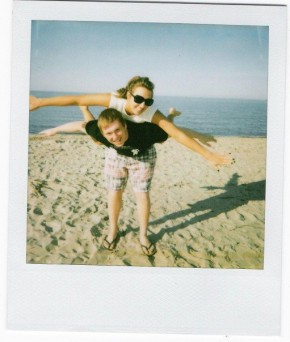 I lived with one of my best friends my senior year of college who exposed me to many firsts, most of them Web 2.0 related. Referred to as “THE Internet” by our outer circle, he opened my eyes to the world we commonly refer to as social networking. He convinced me to join Twitter before it became what it is today, forced me into blogging on Tumblr before I saw the value in it and even pushed me to try Foursquare—one of the most popular location-based apps, which has undoubtedly consumed a plethora of joyous and un-productive hours of my life (as well as earned me dirty looks from my friends at the brunch table.)
I lived with one of my best friends my senior year of college who exposed me to many firsts, most of them Web 2.0 related. Referred to as “THE Internet” by our outer circle, he opened my eyes to the world we commonly refer to as social networking. He convinced me to join Twitter before it became what it is today, forced me into blogging on Tumblr before I saw the value in it and even pushed me to try Foursquare—one of the most popular location-based apps, which has undoubtedly consumed a plethora of joyous and un-productive hours of my life (as well as earned me dirty looks from my friends at the brunch table.)
Today, I would shamelessly diagnose myself an addict, a user of well over 30+ networks. I blame said roommate for my obsession, but also have to give him credit for teaching me some valuable things about picking and choosing the networks that will bring the most value to an individual and/or a business.
Don’t assume that a popular network means success for you or your business. Just because a particular site has the most users or is deemed as the new “it”, doesn’t mean your business will benefit from using it. Research is essential before jumping on to any platform, established or not. An individual has the freedom to test and try things more freely, but a business really needs to evaluate what audience they are trying to reach and how other businesses alike are using that platform. Certain social networks can provide a useful outlet to interact with your audience while others won’t present any benefit at all. Pinterest, for example, works well for retailers and advertising focused industries because of its visual business model. Retailer’s can pin their products, which will then drive traffic back to their own site. Although fast growing and currently the talk of the social universe, it won’t provide much to a non-visual industry.
Get organized before you get started. Devising a social media strategy for your business is key; whether you create said strategy yourself or hire a qualified firm to help you, this should be your first step. Deciding on your audience reach, where they are, your end goal, deployment schedules and how the network will be maintained are all part of staying organized and using a social network effectively. A consistent plan that’s universal throughout your organization will help maintain your new presence on your chosen platform and keep everyone on the same page internally with the same goal in mind. If you start off using Twitter, decide how often tweets will go out, what the content will include, who the tweets will be geared toward, how you want to be represented, who are your competitors, etc.
Do one thing really well rather than multiple things haphazardly. It’s a common misconception that you need to be on everything in order to be considered a thought leader or, my least favorite term, an “influencer.” People create user accounts on multiple social networks, some collecting dust. Not good. Become a pro at one platform first. Learn the user capabilities and how far you can stretch them, track your progress and audience influence, see what they respond to most and test new ideas to prove their stickiness. If you have decided that your audience is on Facebook, learn the etiquette of the platform. When do people usually post and how often, what are the things your audience seems to react to best and how can you provide that. Learn how to set up tabs, understand the layout (whether it be timeline or the next update). Your network will be a breeze to maintain once mastered, which will then leave room to consider joining another down the road.
All social networking is trial and error, but having a plan before you start a new account will benefit you and your business. Who knew that the guy who purchased my first mullet wig, explained to me the binary numeral system and pushed me to get a web domain would have jump-started my career in social. I should probably go tweet him a thank you.
*Originally posted on the Thinkso blog
Perfectly Sunday Breakfast
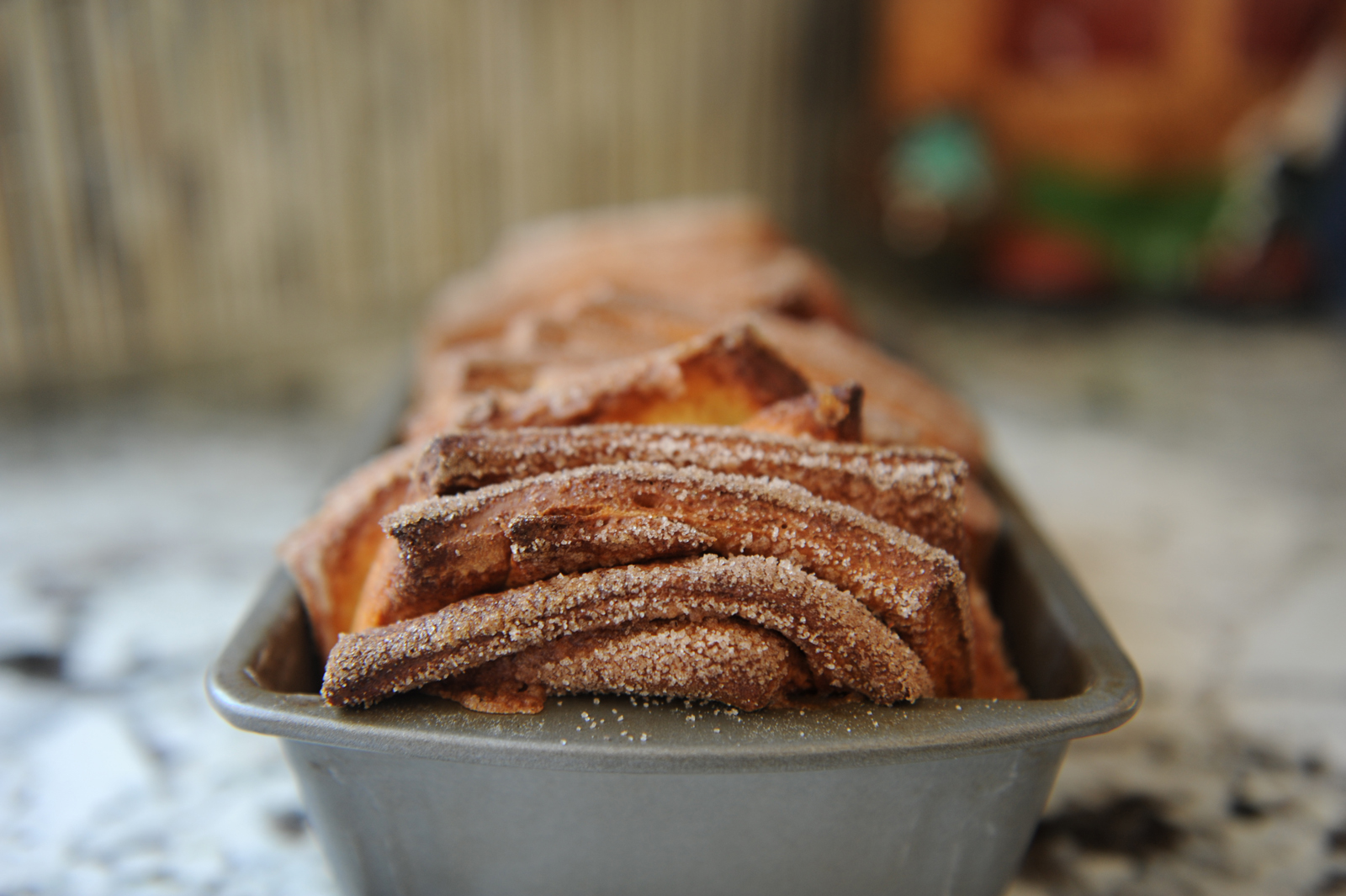 Honestly, this thing was stupid good and although I am fully aware I can’t really have it more than twice a year the occassion is always well worth the wait. Perfect if you have company over or a lazy Sunday. It’s buttery, sweet and the cinnamon is guaranteed to fill your pad with heavenly smells.
Honestly, this thing was stupid good and although I am fully aware I can’t really have it more than twice a year the occassion is always well worth the wait. Perfect if you have company over or a lazy Sunday. It’s buttery, sweet and the cinnamon is guaranteed to fill your pad with heavenly smells.
Get the Cinnamon Toast Pull Apart Bread recipe here.
Playing Games With Social Media
While increasing visibility and traditional media coverage is a nice perk, you’ll get much more from your social media efforts if you focus on using it as a tool to build brand advocates rather than as just another PR outlet. What’s the best way to do that? By providing something that your audience finds valuable.
“Screw earning media. Start earning value!” was how one of the speakers put it during Social Media Week NYC this month (#SMWNYC.) In other words, the value that social media provides to a brand is something beyond a mention in an article or a retweet; it generates opportunity to build ongoing, solidified relationships with customers and influencers. And in turn, they will provide you with value—referrals, R&D ideas, a knowledgeable focus group, and yes, of course, increased revenue. But how do we do this?
A handy acronym to help you earn value from your customers through social media (courtesy of speakers @shaunabe and@saneel) is:
GAMES – Good, Attention, Money, Experience, Stuff
Good –Whether you’re promoting a charitable organization or showing your involvement in the local community, chances are you will gain more respect from your audience while contributing to the greater good. Participating in a non-profit initiative is the quickest way to humanize your brand. It also can help your social space become more interactive. Whole Foods is a great example, tying a charitable component to their brand and generating value for the customer. This year they started a National Peanut Butter Day event on Facebook, challenging people to buy a jar of peanut butter at participating stores. In return, Whole Foods would donate a jar to the Chicken Soup Brigade.
Attention – Acknowledging a customer through social media sends a direct message that your brand values them. Re-tweeting them, commenting on something they posted or even using an active follower as customer service for your business shines a little lime light on them. There are lots of ways to do this creatively without taking advantage. @Chipotletweets is really good at interacting with people talking about their brand without seeming generic in their responses.
Another great example is Charity: water. They created a new channel on YouTube and made as many videos as possible in one day to thank supporters personally as part of the company’s 5th birthday celebration.
Money – Obviously the promise of cash can help you drive traffic and expand your brand presence. But try using a money incentive in combination with one of the G, A or E tips to boost engagement further. For example, run a contest where the winner gets to choose a charity your organization donates to or reward a customer with the best story that meets a company initiative. You can generate value for your brand and customer without spending lots of cash. But monitor the frequency of this, as you can quickly draw the wrong crowd just looking for an open wallet.
Experience – Remember that your customers’ experiences with your brand through social media isn’t just for first-time customers. It’s also continuing the relationship with your long-terms fans as well. But the experience needs to be valuable enough for your customer and your organization to benefit from it. Just like a rockstar at a concert, your fans support you. But you can strengthen their experience with your brand through simple gestures like pulling one on stage to sing a song. They will probably talk about you positively to their friends and are likely to buy tickets to the next show. The experience was valuable to them and the spend is justified. A great example of this is the Nike #MakeItCount campaign. Nike invited athletes and inspired users to participate in a conversation via Twitter, using the personalized hashtag to act as a new years resolution tweet. They created an inspiring and motivational experience for their consumers and took the extra step to tweet exercise advice to those engaging. The campaign even extended onto Instagram, allowing users to submit their own images as well as YouTube. The results have been long lasting, and have continued to generate conversation since its launch in December 2011.
Stuff – Rewards generate customer motivation. Incentives are a great way to draw attention to your brand and help breed buzz. It’s important to always tie your incentives to something that will be valuable to the customer as well as your brand tho. Asking people to answer questions on a quiz, providing a reward for filling out a survey or starting a trivia hashtag on Twitter are good examples. Whatever you choose, make sure you compare the value to your customer to the total spend from your organization.
These tips are key to building a solid and loyal customer base for your business, as well as a strong following on your social networks. There are so many creative ways to achieve all of the above and we would love to hear succeses you’ve had in your organization using GAMES!


